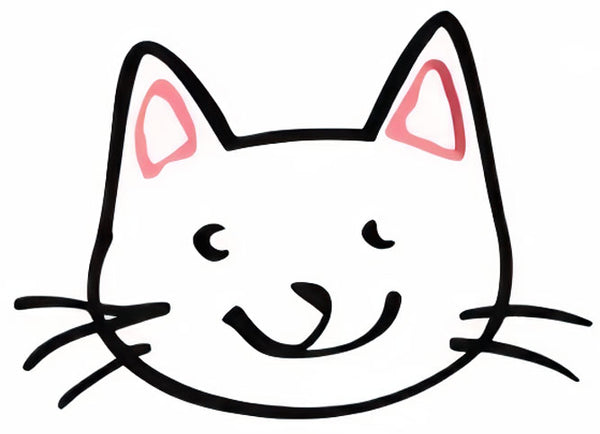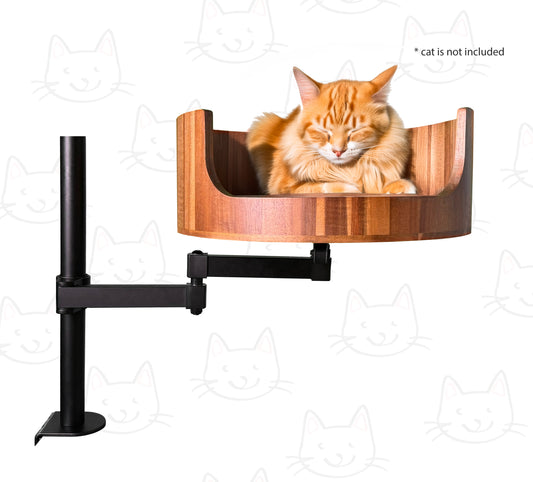
Do Cats Move Their Tails on Purpose? Understanding Behavior
Share
Have you ever wondered why cats move their tails the way they do? It's a common behavior among our feline friends, but understanding the reasons behind it can be a bit more complex. In this article, we'll explore the topic of cat tail movements and delve into the fascinating world of feline behavior.
From swishing tails to puffed-up fur, cats have a variety of ways to communicate their feelings and intentions through their tails. By observing these subtle movements, we can gain insight into what our furry companions are thinking and feeling. Whether it's a sign of excitement, aggression, or contentment, decoding cat tail language can help us better understand and connect with our beloved pets. Join us as we unravel the mysteries of cat behavior and shed light on the question: Do cats move their tails on purpose?
1. Cats use their tails as a form of communication, expressing a range of emotions through different movements.
2. Tail movements can indicate a cat's mood, such as agitation, playfulness, or relaxation.
3. Understanding tail behavior can help cat owners interpret their pet's feelings and respond accordingly.
4. Tail twitching or wagging may signify excitement or irritation, while a relaxed tail indicates contentment.
5. By observing and learning from their cat's tail movements, owners can deepen their bond and improve their overall relationship with their feline companion.
Why Do Cats Move Their Tails?
Cats move their tails for various reasons, and understanding the meaning behind their tail movements can help us better understand their behavior. One common reason for cats to move their tails is to communicate their emotions. For example, a cat may wag its tail rapidly when it's feeling agitated or irritated. On the other hand, a slowly swishing tail may indicate that the cat is feeling relaxed or content. Furthermore, cats also use their tails for balance and coordination. When a cat is walking on narrow surfaces or jumping from one place to another, you may notice their tail moving in tandem with their body movements to help them maintain balance.
Types of Tail Movements
There are several different types of tail movements that cats exhibit, each with its own meaning. One common tail movement is the straight up and vibrating tail, which indicates that the cat is feeling excited or happy. Another common tail movement is the puffed-up tail, which suggests that the cat is feeling threatened or scared. Cats may also flick their tails rapidly from side to side when they are feeling agitated or annoyed. By paying attention to the specific type of tail movement, you can gain insight into your cat's current emotional state.
Interpreting Tail Movements
Interpreting your cat's tail movements can help you respond appropriately to their needs and feelings. For example, if you notice your cat's tail fluffing up and twitching rapidly, it may be best to give them some space and allow them to calm down on their own. On the other hand, if your cat approaches you with a straight up and vibrating tail, it's a sign that they are in a playful mood and may want to engage in some interactive playtime with you. By learning to interpret your cat's tail movements, you can strengthen your bond with them and provide better care and attention to their emotional needs.
Desk Cat Nest FAQ
Do cats move their tails on purpose?
Yes, cats move their tails on purpose as a form of communication. A cat's tail can give you insight into their mood, whether they are feeling playful, anxious, or relaxed.
What does it mean when a cat's tail is twitching?
When a cat's tail is twitching, it could signify that they are feeling agitated or overly excited. It's important to consider the context and other body language cues to understand what your cat is trying to communicate.
Why do cats wag their tails back and forth?
Cats may wag their tails back and forth when they are feeling annoyed or agitated. It could be a warning sign that they are about to become aggressive or that they need space.
Should I be concerned if my cat's tail is always tucked between its legs?
If your cat's tail is always tucked between its legs, it could indicate that they are scared or feeling threatened. It's important to create a safe and secure environment for your cat to help them feel more comfortable and confident.
In conclusion, the Desk Cat Bed is a valuable choice for cat owners looking to better understand why cats move their tails on purpose. This innovative product provides a comfortable and safe space for cats to observe their surroundings and communicate through tail movements. By creating a cozy sanctuary right on your desk, you can observe your cat's tail behavior up close and gain insight into their thoughts and emotions. The Desk Cat Bed not only enhances the bond between you and your feline friend but also provides a unique opportunity for learning and understanding cat behavior. Invest in a Desk Cat Bed today to unlock the secrets of your cat's tail movements.



















































